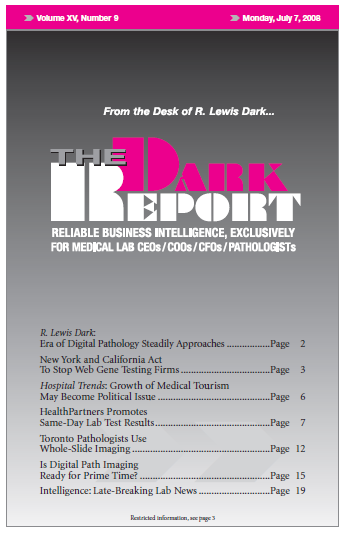“Health plans are interested in improving outcomes and saving money on complex, expensive cases because that’s where the money is. At the same time, that’s an opportunity for labs to help health plans cut costs while also improving quality. ” —Kerry Kaplan, President, Healthcare Solutions CEO Summary: At the most recent Executive War College, Kerry …
Labs Should Build Payer Relationships to Improve Commodity Pricing Read More »
To access this post, you must purchase The Dark Report.


